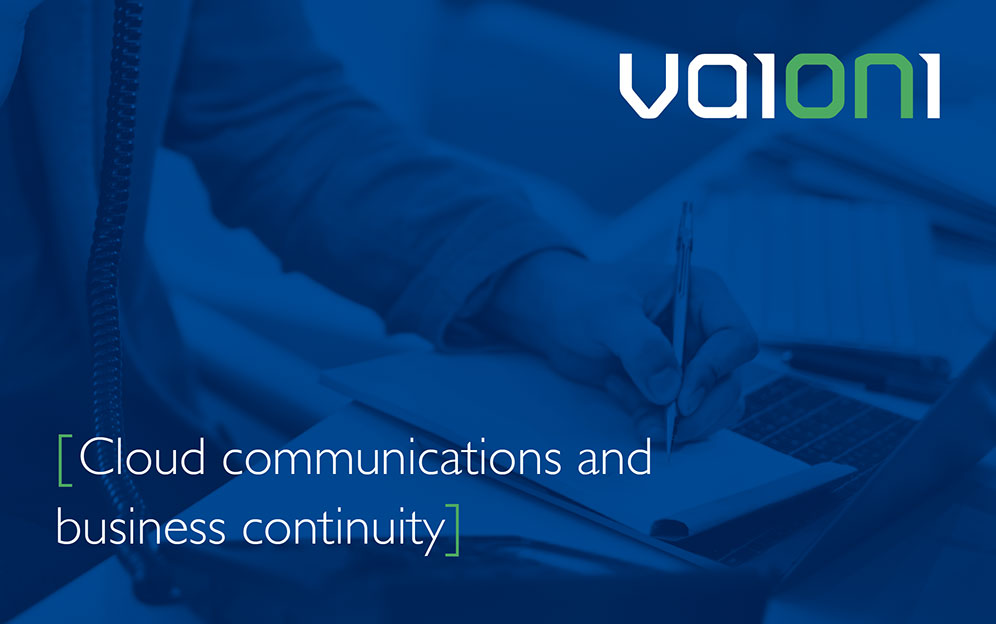As we’ve all found out over the last year or so, a business continuity crisis can catch anyone unawares.
Covid-19 reshaped economic life in a way that nothing else in living memory has. An army of workers decamped to home offices and back bedrooms. Customers turned to online communications, e-commerce and cashless payments in unprecedented numbers. The diversification of supply chains became a business critical issue.
Covid isn’t over, though we may (fingers crossed) be entering its final phase. But even if it is, business continuity incidents come in all shapes and sizes. Anything that disrupts your ability to operate comes into this bracket, and some of these threats are growing, even as Covid recedes.
Business continuity threats
For example, it’s now generally recognised that extreme weather events are becoming more common. Extreme heat, floods, cold and snow can all undermine your business, even if they don’t directly impact your offices.
A flood only has to stop key employees getting to work to become a business continuity issue. Heat or snow that closes schools leaves your staff with childcare issues that affect their ability to work productively. A hurricane on the other side of the world can seriously delay the arrival of an essential component.
Then there’s theft, vandalism or the activities of a clumsy contractor cutting through the wrong pipe. And of course, cybercrime is a constant threat. A new survey by the Department for Digital, Culture, Media, and Sport (DCMS) finds that four in ten businesses report having cyber security breaches or attacks in the last 12 months. Among those that have identified breaches or attacks, around a quarter experience them at least once a week.
Is cybersecurity a business continuity issue? If a ransomware attack locks you out of your crucial data and services, it clearly is. A denial of service attack that closes your e-commerce site is as potentially damaging in 2021 as a flood at your physical premises.
Prepare for the unknown
The results of a business continuity incident can differ widely. Like Covid, it may force a fundamental reappraisal of the way we work and do business. Or like a burst water main, it may close your office down for a couple of days. Either way, in the modern business environment downtime isn’t an option. Wise businesses prepare for the unknown, and put business continuity planning into place.
A business continuity plan is a holistic document that details everything from points of contact in the event of an emergency to the details of commercial property companies with spare temporary office space. But in the modern digital world, a huge part of it is inevitably disaster recovery.
A disaster recovery plan explains how you’ll get essential services back online after a business continuity incident, and how you’ll equip employees with the digital tools and apps they need to be productive, regardless of wider circumstances.
Disaster recovery planning is essential, and happily it’s been made much easier by the advent of the cloud. As we saw during the first Covid lockdown, organisations that had already transferred core services to the cloud enjoyed a far smoother transition to home working than those that were still heavily dependent on on-premise solutions.
Anywhere, anytime work
The beauty of the cloud when it comes to business continuity is obviously that staff can access cloud-based services from anywhere, anytime, and on any device. Productivity isn’t dependent on communal presence in a central location. That isn’t just important during a once-in-a-century global pandemic. It can help your business continue operating effectively during any of the scenarios described above.
Many businesses aren’t in a position to transfer all digital operations to the cloud, and some don’t want to, primarily because of security concerns. But in some areas cloud has undoubtedly shown its worth, proving itself far more agile than on-premise alternatives and at least as secure.
Chief among them is unified communications (UC). At the start of the pandemic, the priority for businesses was communicating with concerned customers and collaborating internally. Everything had to be done from home. Cloud-based UC solutions let every employee take professional communications home with them, and carry on as normal. The transition was seamless, for both customers and colleagues.
Clear Voice for a clearer future
Whatever the disaster, the ability of colleagues to make and take professional business calls from anywhere, and to collaborate in real time, is clearly of huge benefit. And with our own UC solution, agility doesn’t require compromise. Clear Voice is a sophisticated, cloud-based communications and collaboration tool that includes rich data and analytics, a simple-to-use softphone app and a wide range of call management features. It’s available wherever you and your employees have an internet connection. It’s also extremely competitively priced.
In other words, Clear Voice is a great communications solution at any time. The fact that it also prepares your business for the next business continuity crisis is an added bonus. But the future is uncertain, and Clear Voice is an easy way to prepare for whatever it might have in store.


